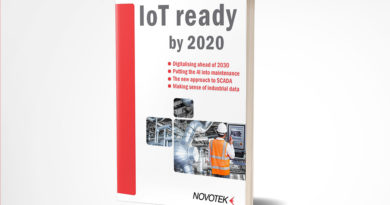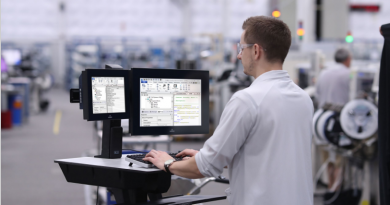Futureproofing automation platforms in power
Every industrial business focuses on uptime as a priority. For manufacturers, this directly relates to productivity and profitability, with any disruption to operations — for example, due to a power failure — being a costly risk. Yet for power utilities companies, uptime is all about securing a continuous supply of power to said manufacturer by ensuring assets are reliably operational. Here, David Evanson, Corporate Vendor Relationship Manager Novotek UK and Ireland, highlights some of the most overlooked factors in automation uptime in power network assets.
The typical power generation and distribution network consists of hundreds of distributed assets, ranging from the generators and motors supporting power generation, to the power poles and infrastructure that distribute that power across long distances. This has been the case for decades, but the number of assets continues to climb as more areas experience greater levels of electrification, adding complexity to the process of managing power networks.
In the years ahead, power networks are only set to become more complex. In 2018, Prithpal Khajuria, business lead and domain expert for power industry at Intel, commented that “there are several new elements coming to the grid, solar panels, added storage, electric vehicles, so the management of the distribution grid is going to become more complex as we go forward.”
The automation layer of a power network is vital in managing this challenge, allowing utilities managers and technicians to remotely monitor assets and easily adjust processes. Integral to this functionality are programmable logic controllers (PLCs) in the field, which already have a complex set of technical requirements that operators must consider when specifying them.
An often overlooked consideration when specifying hardware is futureproofing. For power networks, PLCs might be in operation for over a decade. As such, two other factors become important in selection: environmental conditions and modularity. Some parts of a network are exposed to extended temperature conditions and the PLC must be able to function effectively in this range. Similarly, upgrading PLCs in the future shouldn’t require a complete overhaul of connected automation systems.
From Novotek’s experience providing automation hardware and software to the power industry, part of the reason that operators overlook these considerations is due to the scale of the network. If one in 50 PLCs is failing due to environmental issues, this can at first seem like a nuisance more than a pressing problem. But for larger power generators where networks of 2000 controllers are quite common, this amounts to 40 PLC failures and can severely impede efficient power generation.
Furthermore, when the time comes to modernise and upgrade the PLC or replace it due to a failure, it means ensuring compatibility with the other systems and devices in the automation layer. With some PLCs, operators can find themselves in a situation where only certain models of hardware will communicate effectively, leading to a time-consuming and expensive replacement process.
At Novotek, we recommend choosing open PLCs and automation, which are compatible with the broadest possible range of systems and applications. For example, Emerson’s PACSystems RX3i range of controllers fits this requirement because it is an open controller that can communicate with most modern automation systems. In addition, it also boasts an extended operating temperature that makes it durable in demanding environments and it supports easy migration from outdated controllers, with backwards compatibility for modular kits and built-in programming translation. These factors together make it an ideal option for power network automation.
Although technical capabilities are a core consideration of automation layer devices, futureproofing is equally about environmental and physical factors. They are invaluable to maintain a reliable power generation and distribution network long-term, ensuring uptime for the network and those that rely upon it.



